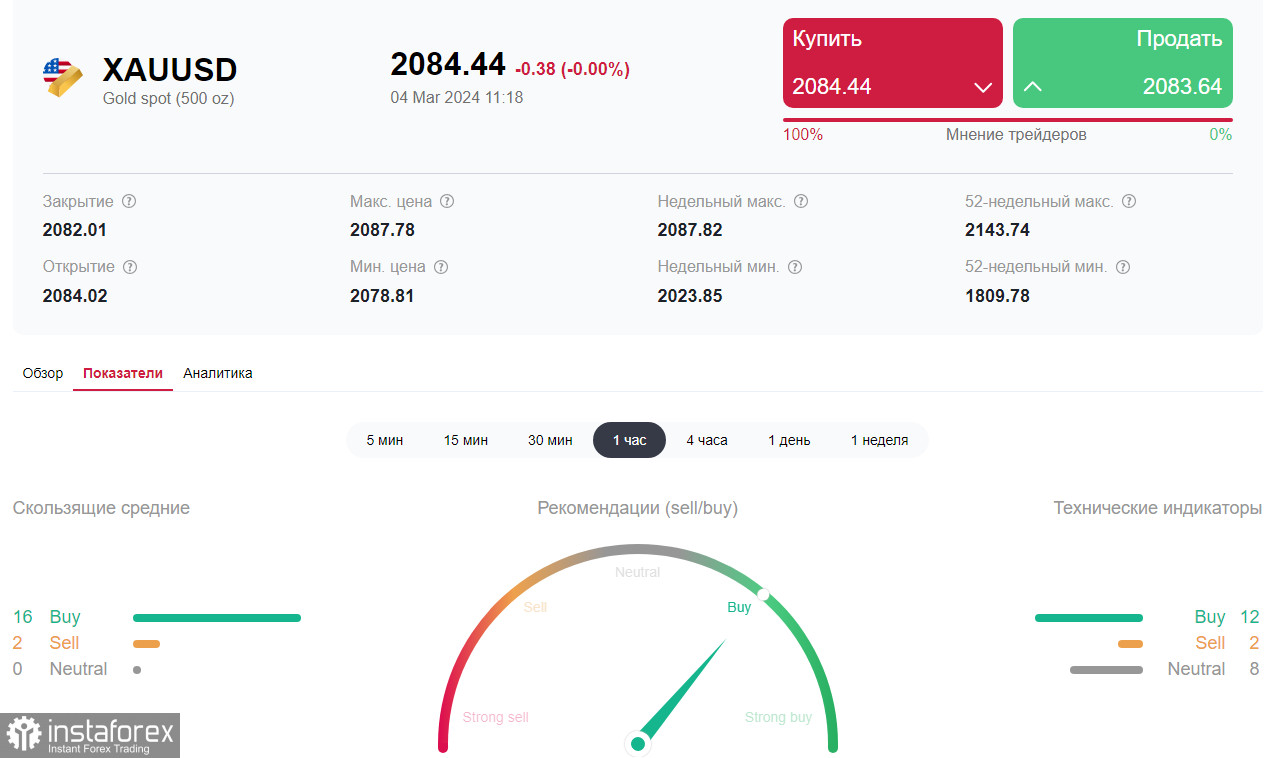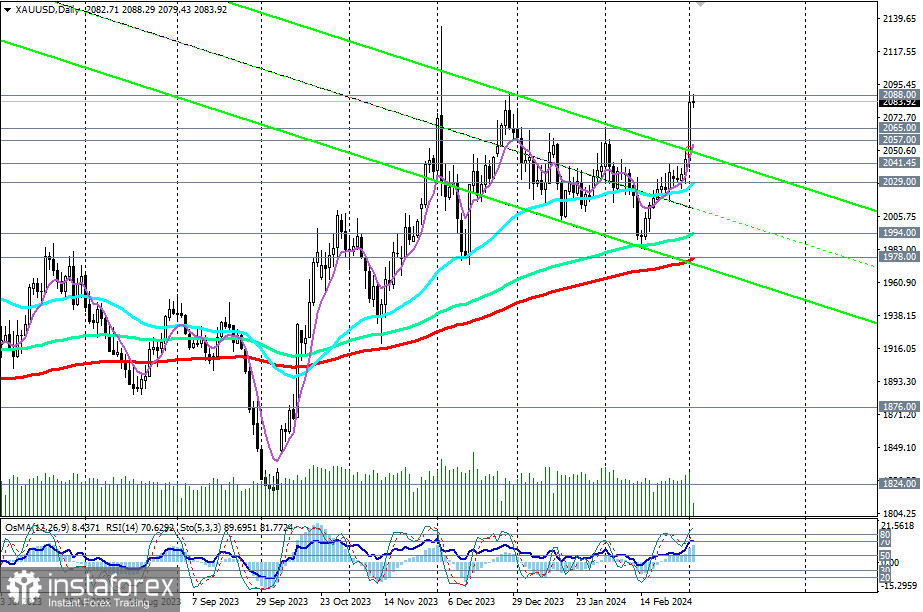In response to the publication of business activity data in the U.S. manufacturing sector last Friday, the dollar sharply weakened, and its index (DXY) again fell below the 104.00 mark.
As reported by the Institute for Supply Management (ISM), the manufacturing Purchasing Managers' Index (PMI) decelerated to 47.8 in February, down from 49.1 in January and below the forecast of 49.5. Despite the S&P Global's PMI, with a final assessment accelerating in February from 50.7 to 52.2 (compared to a forecast and initial estimate of 51.5), also showing positive momentum above the 50.0 mark, indicating growth rather than a slowdown, the market overlooked this indicator.
Presumably, investors were also evaluating important macro data published the day before, indicating that the annual core Personal Consumption Expenditures (PCE) index decreased from 2.9% to 2.8% in February, confirming the trend of weakening inflation in the U.S., along with GDP dynamics (according to the second estimate, the U.S. economy grew by +3.2% in the fourth quarter, not +3.3% as in the initial estimate).
Additional pressure on the dollar was felt due to the decline in yields of 10-year U.S. Treasury bonds (more than 1.5% on Friday) and data on the dynamics of initial jobless claims, which rose from 202,000 to 215,000 on the reporting week, exceeding the forecast of 210,000. The number of continuing claims (for the week ending February 16) also increased, surpassing the forecast at 1.874 million.
At the same time, Federal Reserve leaders are making contradictory statements about the prospects of monetary policy. For instance, the head of the Federal Reserve Bank of New York, John Williams, stated that the next step, in his opinion, should be a reduction in interest rates, although there is no rush on this matter.
Later this week (Wednesday and Thursday), Federal Reserve Chairman Jerome Powell will testify before Congress with a semi-annual report. Presumably, he will also voice his assessment of the Fed's monetary policy prospects.
The macro data and comments from Fed representatives published last week regarding the near-term plans of the U.S. central bank have once again heightened discussions about the imminent start of a monetary policy easing cycle in the U.S. Against the backdrop of the decline in U.S. government bond yields, gold prices surged more than 2% on Friday, and the XAU/USD pair reached a 9-week high of 2088.00.
On Monday, gold bulls are not in a hurry to relinquish their positions, and the XAU/USD pair in the first half of the European trading session is near the 2084.00 mark, maintaining potential for further growth. However, new drivers are needed for another upward surge.

February data on the business activity index in the U.S. service sector and labor market data, expected this week, could well become such a driver if they turn out to be weak. The first of them is expected to be published on Tuesday: at 15:00 (GMT), the ISM will release the PMI for the U.S. service sector.

A moderate relative decline in the index is expected, from 53.4 to 53.0 in February. If the data proves to be stronger than forecasted, a turnaround in XAU/USD downward can be expected, and the correction may have a significant lag, down to the support level of 2029.00.
On Wednesday, market participants' attention will shift to Powell's speech and the report from Automatic Data Processing (ADP) on private sector employment, which serves as a kind of precursor to the official U.S. Labor Department report for February, scheduled for Friday (at 13:30 GMT).





















